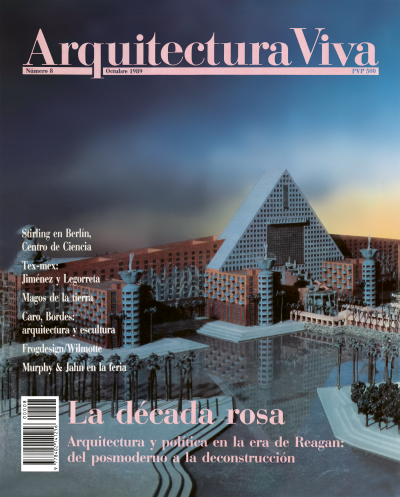

This Arts Centre forms part of a vast operation to refurbish Salford Quays, a port situated at the head of the Manchester Ship Canal. The redevelopment of this port complex, built in the 1890s and closed in 1981, is a large-scale effort to convert it
Temasek Polytechnic is a large-scale project that presents itself as a true university city for 13,000 persons among students, teachers, and administrative and maintenance staff in four faculties (Applied Sciences, Business, Design and Technology) an
This building is designed to be a campus landmark, seeking both to generate urbanity and increase the variety of pedestrian experiences. Meant to be highly visible from all directions, it will serve simultaneously as a gateway to the Ring Mall Plaza
True masters of architecture tend to make each new work of theirs a surprise, but only some of them manage to maintain this effect throughout their careers. Le Corbusier, for instance, put his followers off track at Marseilles, and still totally diso
Rice, Harvard, and finally Cornell. Stirling’s work in the United States is like a replay of his beginnings in England: university buildings in some of the country’s most prestigious campuses. At Cornell, the brief was for a centre for scenic arts wi
After almost ten years of not building in England, James Stirling finally managed to leave his mark on the British capital, and in no less than one of its most prestigious institutions: the Tate Gallery. Like many others in the city, this museum had
Like most of the modem European masters, Stirling's first commission in the United States was for a university building: the extension to the Rice School of Architecture, in Houston, Texas. There he summoned all his contextualist resources to come up
Berlin has throughout the 20th century been a great laboratory for architectural experimentation. If the Thirties had the Siedlungen and the Fifties the Hansaviertel, the decade of the Eighties was witness to the spectacular feat of the International
Though unanimously acclaimed by critics all over the world, Stirling’s buildings of the Sixties met with a great deal of reticence on the part of their users, whose attacks succeeded in making him a cursed architect in his own country. Projects as in
The almost instantaneous success of the Leicester laboratories led to Stirling and Gowan being invited to participate in the exclusive competition for another university building, at Cambridge. But their partnership ended before the project was finis
Palazzo Citterio is an 18th-century patrician residence built in Barocchetto style. In the two hundred years of its life it has undergone all kinds of transformations in structure and use. By 1970, when the building became state property, both its in
The refurbishing of London’s docklands, expounded during the Eighties as an offshoot of the economic euphoria of those years, is a paradigm of Margaret Thatcher’s urban policies, based on private speculation and deregulation. The residential and tert
This proposal for the Tokyo International Forum, designed to be a venue for conventions and exhibitions, tries to emphasize the symbolic importance of the complex by placing a tall building in the center and relating it to an outdoor public space. L

